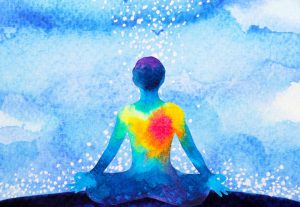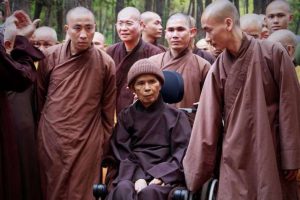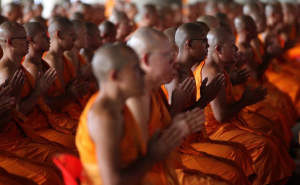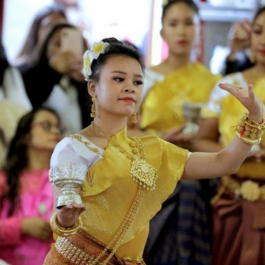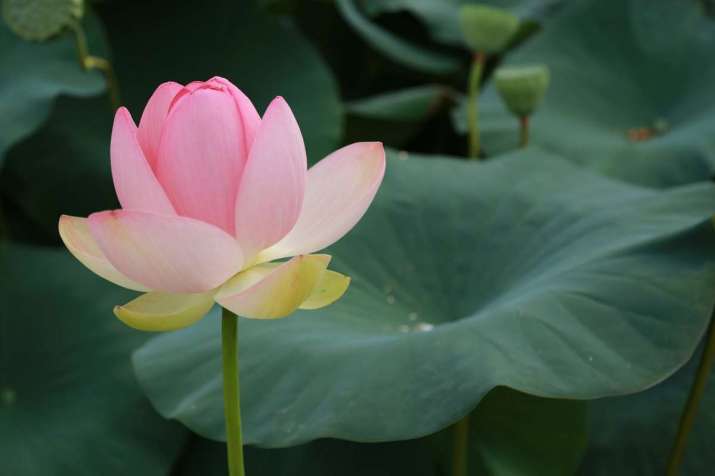
In the Sutta Nipata, translated by Fausboll in Sacred Books of the Past, (Vol.X pp 111–13), there ensues a controversy between two disciples of Brahmanic origin, arguing about caste and what makes one person superior to another person.
Being unable to convince one another, they approach the Buddha and request his help in resolving the quandary. The first disputant, Bharadvaja, argues that a Brahmin is superior based on birth alone, while the second disputant, Vasettha, asserts that a person becomes a Brahmin based upon meritorious actions only.
For the sake of clarity, as the wording of Fausboll’s translation is antiquated, I have paraphrased and condensed the words of the Buddha’s response:
The Enlightened One claims that he can delineate the exact distinction between living beings, following the differences in diverse species:
With grass and trees, there are distinctions which designate species, and these species are many, although they may not always be apparent. With worms and moths, and different sorts of ants, there are distinctions which designate species, and their species are many. With four-footed animals, small and great, there are distinctions which designate species, and their species are many. With the serpents, the long-backed snakes, there are distinctions which designate species, and their species are many. With fish which range in the water, there are distinctions which designate species, and their species are many. With the birds which are borne along on wings and move through the air, there are distinctions which designate species, and their species are many.
According to the Buddha, unlike with grasses, trees, worms, moths, fish, beasts, birds, and so on, among men, there are no distinguishing characteristics of species. There are significant distinctions regarding other beings endowed with bodies, but in the case of humans any differences are merely nominal.
Where humans are concerned, there are no significant distinctions that would warrant designating separate species, neither regarding hair, heads, ears, eyes, mouths, noses, lips, nor brows; nor as regards their necks, shoulders, bellies, backs, hips, breasts, female organs nor sexual intercourse; nor as regards their hands, feet, palms, nails, calves, thighs, color, nor voice. There are no distinctions that would constitute separate species. Occupations such as cow herder, farmer, archer, or soldier do not make men Brahmins. Neither do rank nor status. Nor can a person be deemed a Brahmin based on birth by a particular mother.
According to the Buddha, unlike in the case of grasses, trees, worms, moths, fish, beasts, birds, and so on, among humans there are no distinguishing characteristics of species, because apparent differences between humans are not based on inviolable biological factors but rather on worldly conventions and classifications (savanna). Any distinctions made based on differences in skin color (Pali: vanna), hair form (kesa), the shape of the head (sìsa) or the shape of the nose (nása), and so on, are only worldly conventions and would not justify categorizing humans into differing species.
When the Buddha teaches treating all people equally, as fathers, mothers, brothers, and sisters and family, irrespective of race or caste, there seems to be some sense of ultimate veracity in this assertion, something higher than mere village convention.
Brahmins claimed that their hereditary characteristics included being handsome (obhirupo), fair (dassaniyo), endowed with an excellent complexion (paramaya vanna-pokkharataya samannagato), and of the fairest color (brahma-vanni), by virtue of which they claimed superiority over those of a dark complexion (D. I. 114), but a little empirical research quickly proves this not to be true.
The terms “Aryan” (ariya) and “non-Aryan” (anariya) frequently appear in Buddhist texts, but they are never used in a racial or caste sense. The racial sense of superiority associated with “Aryan” is based on social inequality; whereas, in the Buddhist sense, Aryan’ connotes a moral, spiritual sense of purity, leading to moral superiority and detachment, free of any association with race or birth.

Buddhists use the word Aryan in the sense of “noble” and “spiritual,” as opposed to non-Aryan in the sense of “ignoble” and “immoral,” and this indicates how Buddhism ignores racial claims and distinctions, thereby avoiding conflict while directing perceptive listeners in a wholesome direction.
“Aryan quest” (ariya pariyesana) in the Buddhist sense means “spiritual quest,” defined as the quest of one subject to birth, decay, and death, having realized the evil consequences of craving and attachment and sought the secure, immortal haven of Nirvana. (16 M. I. 162–3). “Aryan haven” (ariys uccasayarea-maha-sayanam) means the “spiritual haven,” free from lust, hatred, and delusion. (A. I. 182)
During the Buddha’s time, there were two teachers who believed that humans lacked free will. One was Purana Kassapa, who denied the human capacity for moral action in the realm of virtue due to having no free will. The other was Makkhali Gosala, who denied both free will and human causality, claiming that beings were either miraculously saved (ahetu appaccaya satta visujjhanti) or hopelessly doomed. Both believed that human beings belonged to one of six species (abhi jati); specific types with pre-determined constitutions, physical traits, habits, and mental natures that they could not alter through their own actions of will. (A. III. 383–4)
The six types were designated by six colors. They were the black species (kanhabhi jati), the blue species, the red species, the yellow species, the white species, and the pure white species.* The range of wickedness or saintliness differed in degree and not in their power to alter. The pure white species were reckoned to be perfect saints, although their saintliness was considered as natural to them as their physical formulation and being in no way achieved by an effort of will. To the black species belonged the butchers, fowlers, hunters, fishermen, dacoits, and executioners, all of whom adopted a cruel mode of living. They belonged to the lowest castes and had the darkest complexions.
It was believed that human beings who suffered pain in this life were born to suffer due to inheriting physical constitutions and psychological natures. (M.II.222) The Buddha, on the other hand, held that humans have free will and a capacity for becoming moral or immoral, happy or unhappy, by transforming positively or degenerating morally, and he denied that there are genetically determined fixed human types.
There are six classes of beings: namely the evil who remain evil, the evil who become good, the evil who transcend good and evil and enter Nirvana; the good who become evil, the good who remain good, and the good who transcend both good and evil and enter Nirvana—through the exercise of their free will.
The emphasis is not on how humans are born but rather on how they behave. Irrespective of the physical and psychological characteristics they are born with, when given an opportunity, humans can make an effort to change, hopefully, for the best and not for the worst.
For more expertise on this subject, the reader may consult Buddhism and the Race Question, as noted in the reference below.
* In the Indian caste system, it was thought that Brahmins were white, Ksatriyas red, Vaisyas yellow, and Sudras black.
References
Jayatilleke, K. N. and G. P. Malalasekera. 1958. Buddhism and the Race Question. Paris: The United Nations Educational, Scientific and Cultural Organization.
See more
Buddhism and the race question (UNESCO)



